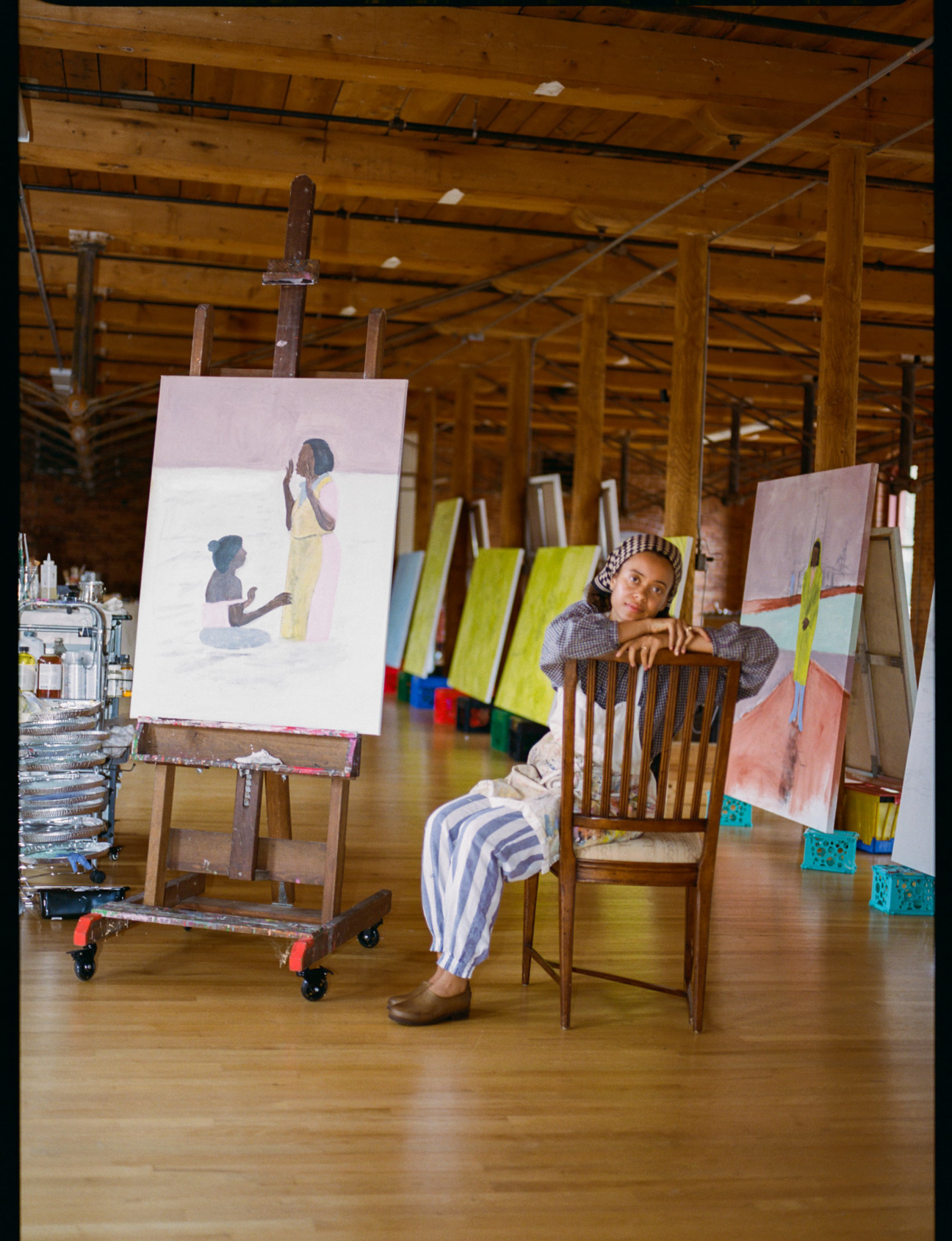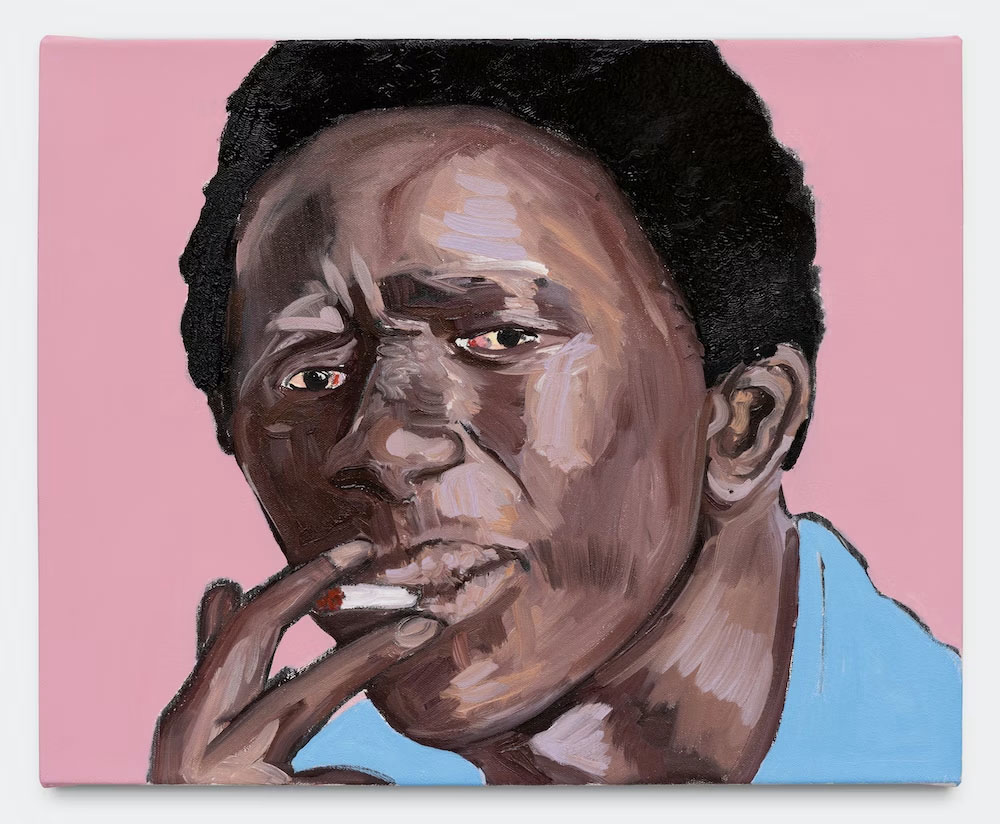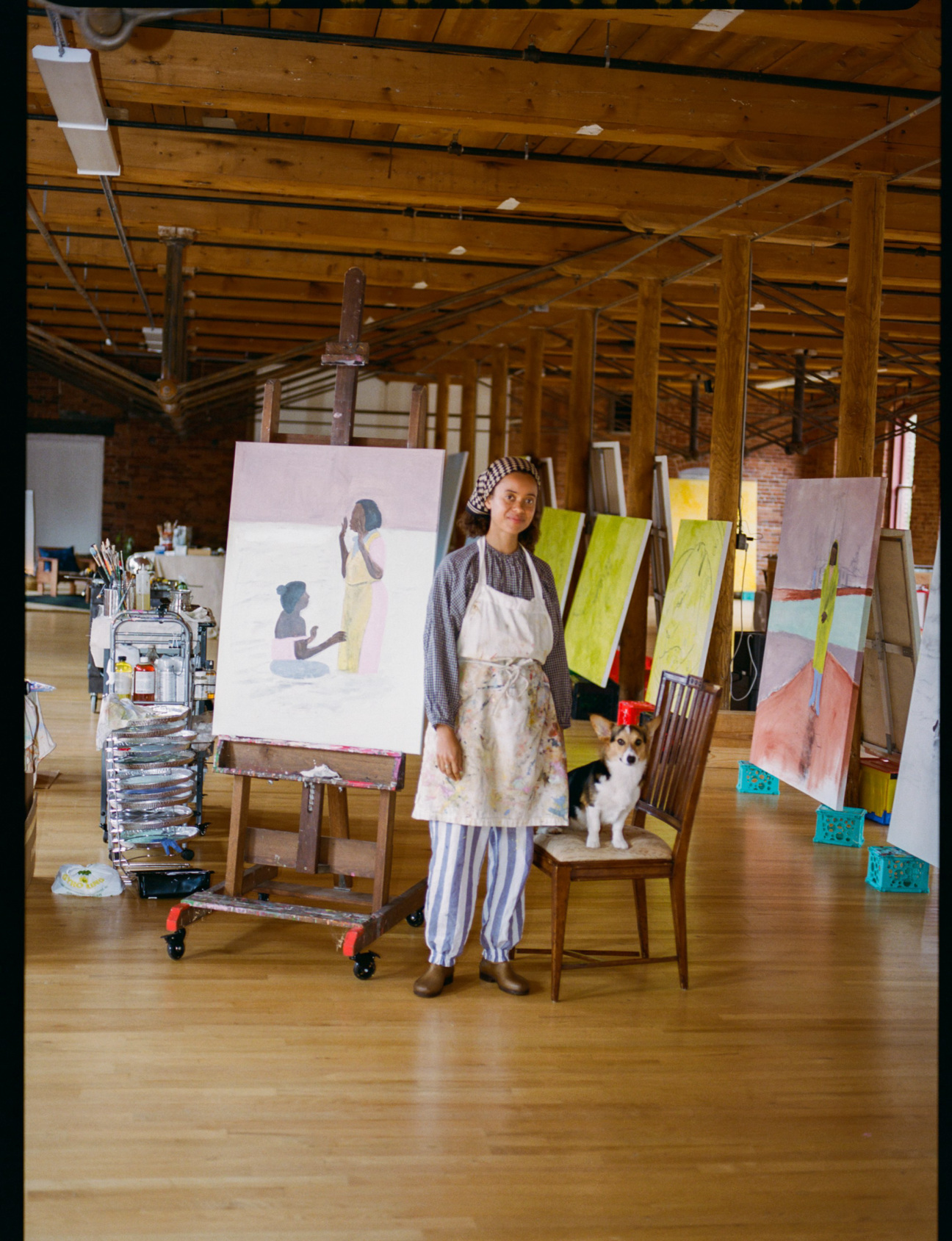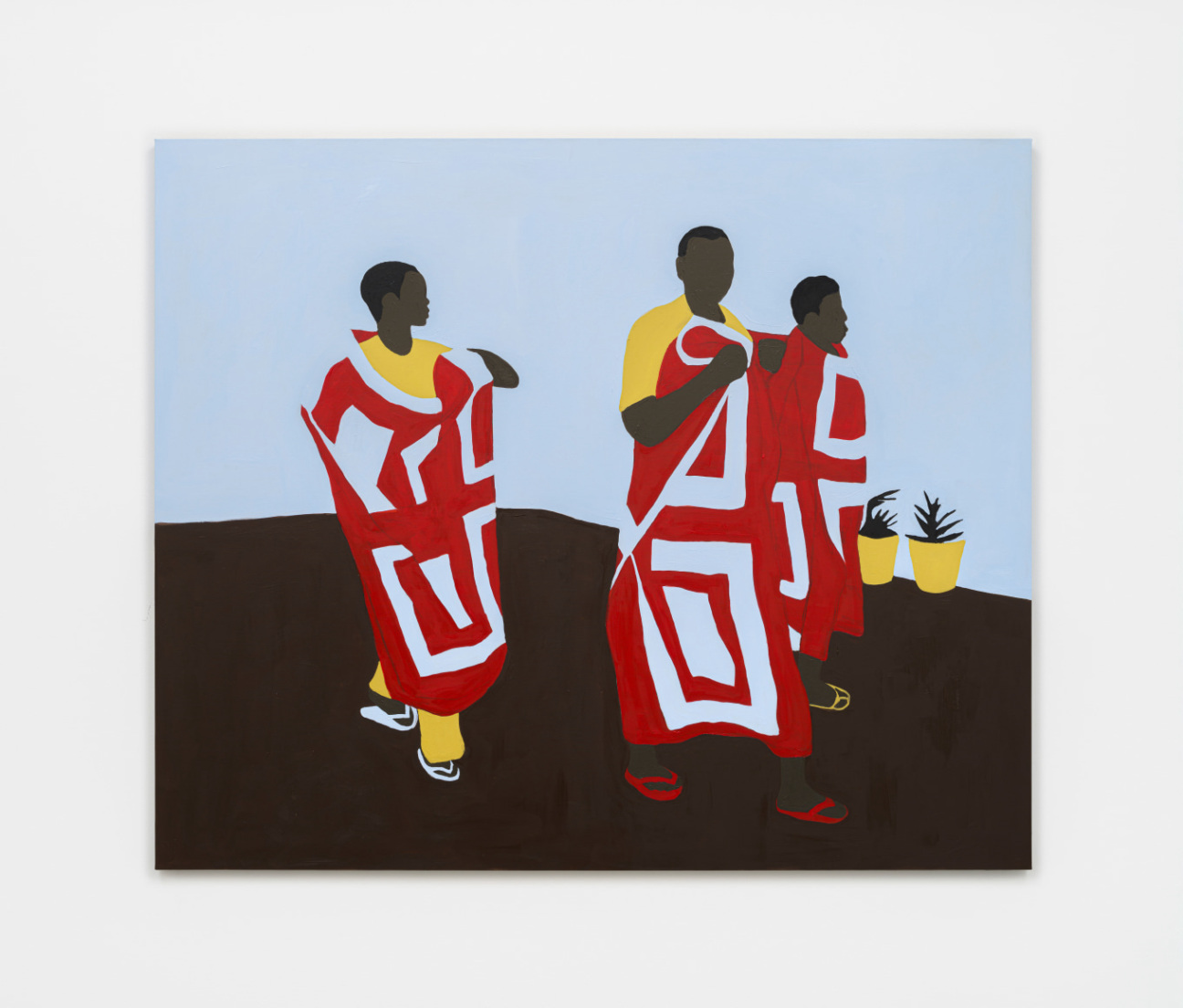
How do you learn a city? “The cadence is different,” says Cassi Namoda, who often travels to far-flung locales to paint. “And the light in every city is different.”
In the summer of 2018, she was painting in a garage in Maputo, Mozambique, where mosquitoes came in to interrupt her at dusk and dawn. At night, after the heat cooled down, she took refuge in bars, where the dark of people’s clothes glowed under dim lights. Those nocturnal scenes appeared in her paintings for “Bar Texas,” her show at Detroit’s Library Street Collective later that year.

Born in Maputo, the 35-year-old has spent a large part of her life shuttling between Uganda, Kenya, and New York. When she was 16, living in Uganda, her photojournalist neighbor gave her an old Nikon. One day, she took a trip down to the Nile, which churned in front of her as monkeys scurried up trees.
A Swahili proverb jangled in her head: “The day a monkey is designed to die, all trees become slippery.” Moved, she decided she wanted to make art about African stories, not like the paintings she saw in New York museums. She took a photograph that later hung on the wall in her first Los Angeles exhibition at François Ghebaly in 2019.

After studying cinematography at the Academy of Art University in San Francisco, Namoda transitioned to painting full-time in 2016. She was drawn to the medium’s approaches, both gestural and figurative, to stage compositions fraught with tension and longing. Sad and stupid desires, 2022, shows a man with knitted brows, smoking. His face is painted in broad brush strokes. In his eyes, a pinprick of red harmonizes with the burning cherry at the tip of his cigarette. What is he thinking about?

Namoda has made a name for herself within a revival, in the last decade, of Black figuration, typified by painters like Toyin Ojih Odutola and Amoako Boafo, who, like her, saturate their subjects’ faces with psychological complexity. Recently, however, Namoda has turned toward abstraction with scenes that reference disaster and migration, on display earlier this fall in “A gentle rain is dying,” a show with New York’s 303 Gallery.
Existential migrations in Mecufi, 2023, shows migrants wrapped in blankets, evoking a crossing that brings to mind the treacherous Darién Gap between North and South America. Their faces are planes of color without punctuation, unknowable. “There needs to be questions with the viewer,” she concludes. “Maybe you don’t answer all of them.”
For more about CULTURED's 2023 Young Artists, read our features with Alex Tatarsky, Charisse Pearlina Weston, and Oscar yi Hou.










 in your life?
in your life?

